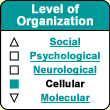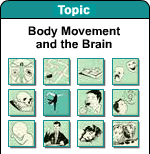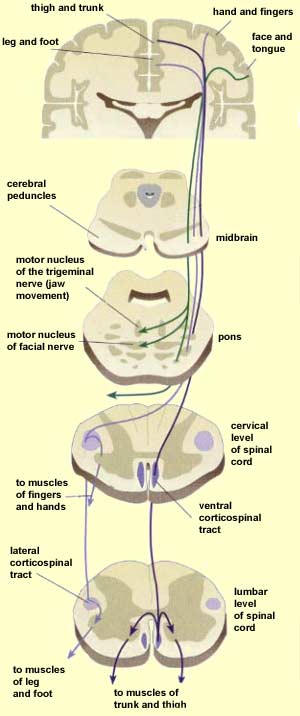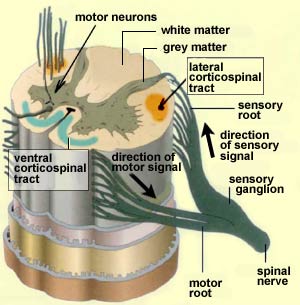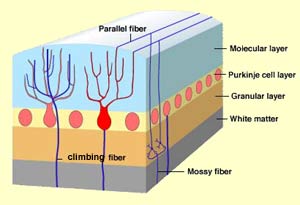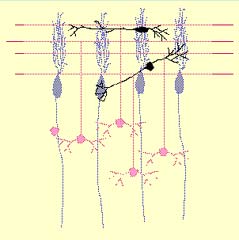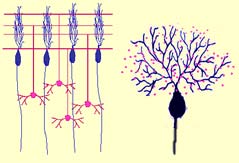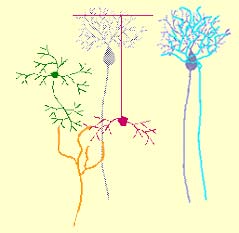In contrast,
the axons that these pyramidal neurons send out must travel
a considerable distance to reach their targets: the motor
neurons in the brainstem and the spinal cord. We therefore
distinguish two descending pyramidal tracts that are responsible
for voluntary movements.
The corticobulbar tract leads
to the motor neurons in the nuclei of the brainstem. These
nuclei stimulate the muscles of the face, jaw, tongue, and
pharynx, via the cranial nerves. The other descending pyramidal
tract, the corticospinal tract, stimulates
the motor neurons in the spinal cord that are responsible for
moving the body's axial muscles, as well as the arms and legs.
The corticospinal tract follows two different pathways
to descend into the spinal cord. The first, called the lateral
system, contains the axons of the cortical neurons
that are responsible for the muscles of the extremities.
The fibres in this bundle pass over the ventral surface
of the brainstem to form two eminences called the pyramids.
Next, at the junction between the medulla and the spinal
cord, the fibres of this lateral corticospinal tract cross
the midline and continue their descent on the opposite
side of the spinal cord. About 80 to 90% of the axons from
the motor cortex undergo this crossover, or decussation,
before reaching the motor neurons responsible for the movement
of the most distal segments of the arms and legs. |



